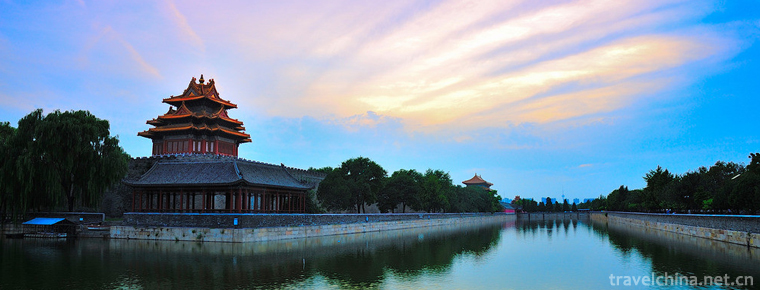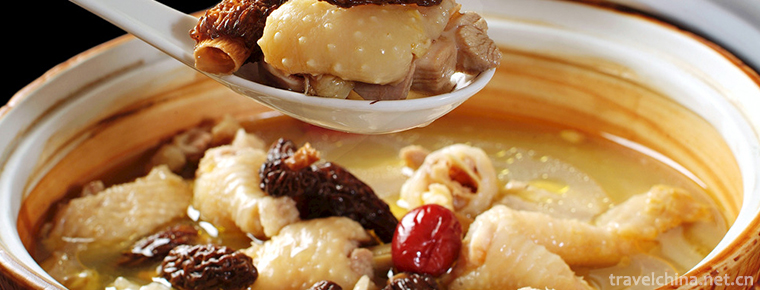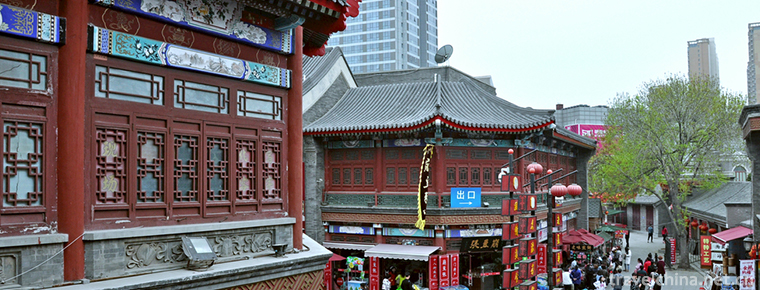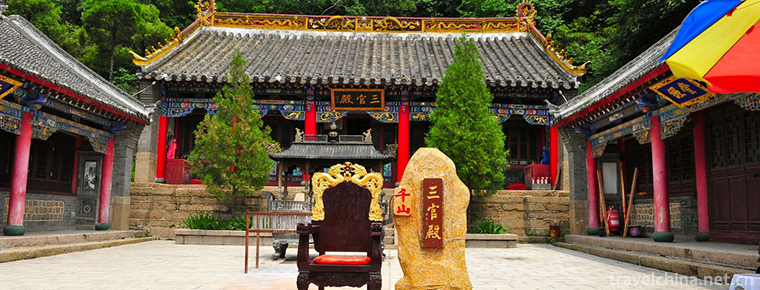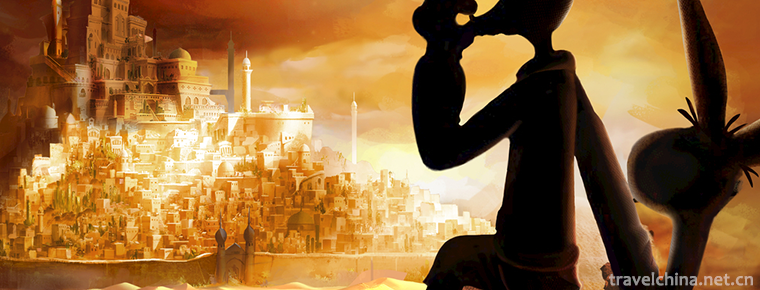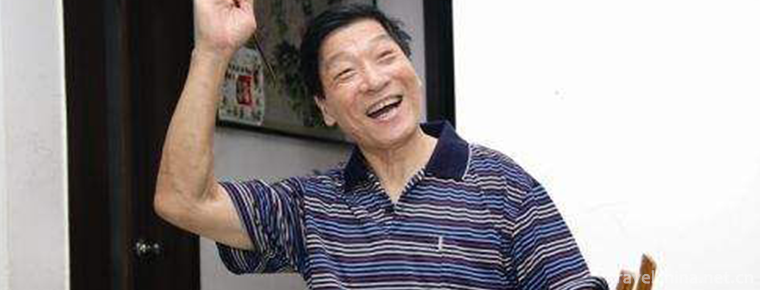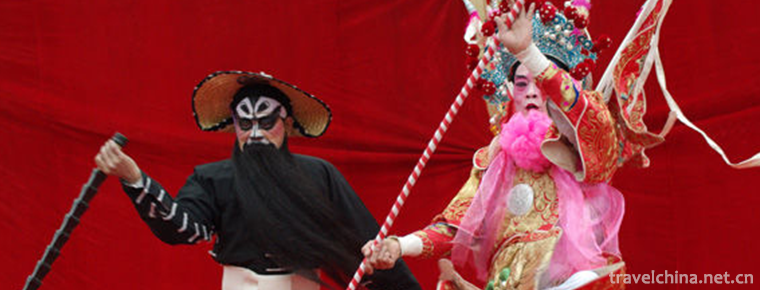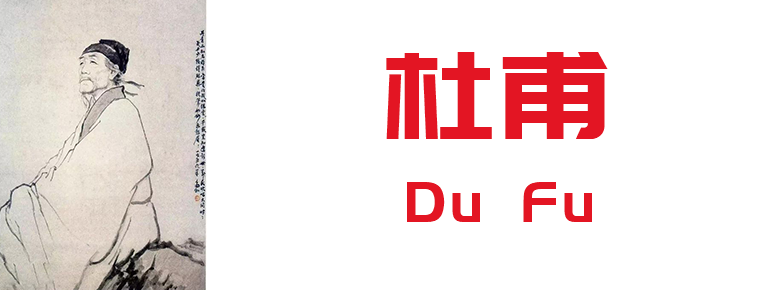Hanju Opera
Hanju Opera
Han Opera, a local traditional drama in Wuhan, Hubei Province, is one of the national intangible cultural heritage.
Han Opera, formerly known as Chu Diao, Han Diao (Chu Opera, Chu Opera), commonly known as "Erhuang". The mid-Qing Dynasty was formed in Hubei Province and was named as Han Opera in the Republic of China. Han Opera is mainly spread in Hubei Province, as well as parts of Hunan, Henan, Sichuan, Shaanxi, Hunan, Guangdong, Anhui, Jiangxi, Fujian, Guizhou and Jin provinces. There are more than 660 traditional operas in Han Opera. They have beautiful singing voice, elegant white voice, atmospheric text and high requirements for the cultural quality of the actors. The roles are divided into ten lines. Besides Xipi and Erhuang tones, Luoluo tone is also widely used. Accompanied instruments are Huqin, Yueqin, Sanxian, drum board and so on.
On May 20, 2006, Hanju Opera was approved by the State Council of the People's Republic of China to be included in the first batch of national intangible cultural heritage catalogues, numbered IV-30.
historical origin
Historical origin
Han Opera is one of the local operas in China, which is known as Chu Diao and Han Diao. The mid-Qing Dynasty was formed in Hubei Province. Originally, the Qin Opera evolved from Xipi in the south of Xiangyang as its main tone. In the course of its development, four tributaries of Jinghe, Xianghe, Fuhe and Hanhe were formed, commonly known as Luzi. It has an impact on the formation and development of Hunan Opera, Sichuan Opera, Ganxi Opera, Gui Opera and Yunnan Opera. During the reign of Jiaqing and Daoguang in the Qing Dynasty, Han Diao was spread to Beijing and joined Hui Diao Class to sing. It gradually merged and evolved into Peking Opera.
In the first year of the Republic of China (1912), it was named Han Opera. After the outbreak of the Anti-Japanese War, Han opera artists participated in the anti-Japanese national salvation activities and established a mobile performing team of Han opera. In 1962, the Wuhan Theatre was established, with Chen Bohua as its main actor.
developing process
Local drama in southern Shaanxi is developed from folk songs, folk songs and minors in the Hanshui River basin. Its tone is pronounced in the Hanzhong area, similar to that in the Hanshui opera. Being good at literary opera, Bashan has a strong flavor, elegant tone, graceful singing tone, soft Tao Bai, interesting language, delicate performance, simple and generous, strong singing tone and pronunciation of Baiba Mountain, and is good at Sichuan flavor. Plate style can be divided into upper and lower levels. Up-regulation is mostly used to express sadness, desolation and indignation; down-regulation is mostly used to express comfortable, bright and bold mood. Before the 1960s, Hantai District, Xixiang County and Zhenba County in Hanzhong City mostly performed the second reed of HanDiao.
The earliest birthplace of the second spring in the Han Diao is along the Haoping River in Ziyang. The earliest class activities can be traced back to the second year of Qianlong (1737). In 1958, according to old artists Feng Rencai and Qiu Shengmao, there was a wall inscribed on the musical building (stage) of Haoping Hedongmen Monastery: "Qian Sheng Ban broke the stage here in August of Qianlong 2002". Born in Qianlong 36 years ago, Art Artist Yang Lutai (Yang Family Genealogy) of Haoping River was famous for his performance in the area of Haoping River from the end of Qianlong to Jiaqing. During the period from Jiaqing to Daoguang, Yang Lutai and his son Yang Jinnian continued to lead the singing, and in Shaheba and Qujiahe of Xixiang, he founded the second reed class of Han Diao for the first time, with more than 60 apprentices. He trained two generations of artists for the second reed. The most outstanding artists of the "Lai" generation are Cha Lai Song and Qu Lai Shou, and the most outstanding artists of the "Hong" generation are He Hongsheng. The two generations of artists dispersed in Ankang, Hanzhong, Shangluo, Guanzhong and Sichuan, and continued to organize classes and teach apprentices, thus enabling the dissemination and development of the second reed of the Han Diao in various places. In the process of its popularity, influenced by the local languages, folk songs and local operas, Hanzhong, Ankang, Guanzhong and Shangzhen were formed one after another. In the late Qing Dynasty and early Republic of China, there were many classes and societies, and many artists came into being.
Han opera belongs to the Pi-reed tune system, which was called "Chu tune" and "Chu tune" in its early stage, and later "Han tune" and "Han opera", commonly known as "Er-huang". There are proverbs of "one Qing, two Huang, three Vietnamese tunes" in northern Hubei, and "one Qing, two bullets" in eastern Hubei. They call Han opera "random bullets" or "play games". Documents have recorded the appellations of "Huguang Diao", "Huangqiang", "Leather Spring" and so on. Before the Revolution of 1911, it was still called "Han Diao", which was renamed "Han Opera" from the beginning of the Republic of China. Its main vocal cavity is Xipi and Erhuang, which pioneered the PI and reed ensemble in local operas, thus forming the pi-reed vocal cavity system. Han Opera is popular in the Yangtze River and Hanshui River basins in Hubei Province and parts of its adjacent provinces, such as Hunan, Shaanxi and Sichuan.
Erhuang sprang up in the middle and lower reaches of the Yangtze River. It was developed from Erhuang in Anqing Huiban, Anhui Province. It was introduced into Siping Tune of Hubei Province and developed by Hubei artists. Xipi evolved from Shanshan and Shaanxi Bangzi introduced into Xiangyang area of Northwest Hubei Province. The predecessor of Han Opera is Chu Diao. Some documents in the middle of the Qing Dynasty have recorded this. For example, in Yanlan Xiaopu, written by Wu Taichu in the fiftieth year of Qianlong (1785), it is recorded that Yaoqing, a famous actor, had "a new love song and Chu tune". Wang Xiangyun of Chuling is good at selling baboons, singing Jingjiang Yangge and Shahumian (Xueyang) Xiaoqu. In his Hankou Series Talks, Fan Kai of Qing Dynasty also recorded that "Li Cuiguan, a famous actor in Chu Diao of Hankou, and Li Rongqing Department are good at"Drunken Princess","Pani Chasing Boat"and"Yutangchun".
The combination of the Western Pi and the Second Reed of Han Diao goes through a long process of gradual amalgamation. This integration has been recorded in Ye Tiaoyuan's Bamboo Branch Ci of Hankou published in Qingdaoguang's Thirty Years (1850): "The most desolate countertone in Quzhong is the slow yellowing of the western skin, and the sound must be round, bright and long under the high-raised flat plate. There are more than ten classes in Hankou, now there are three. The above description is Ye Tiaoyuan's experience when he visited Hankou again in Daoguang's thirteenth year. The book also describes the artistic inheritance relationship between the former actors and the actors at that time, saying, "Xiao Jin's name is fragrant on that day, and his throat is like a flutter of lips. For twenty years, it's Hulang who has been making a noise. From his account, we can see that as early as the end of Jiaqing, there were more than ten opera troupes singing Han tune in Hankou. They both sang Xipi and Erhuang. They had both positive and negative tones, and they were already a full-tuned opera. Therefore, the merging time of the Han tune and the Leather Spring in Hubei should be during the Jiaqing period.
During the reign of Jiaqing and Daoguang in the Qing Dynasty, Hubei Han Diao artists Mi Yingxian, Yu Sansheng, Wang Honggui and Li Liu went to Beijing successively to take Hui classes such as Chuntai and Hechun to sing Pi-reed in Zhongzhou Yunhu Cantonese, which resulted in the situation that the class was called Hui Class and the tune was called Han Diao. According to the family tree of Mi Yingxian and Yu Sansheng, the Han Diao artists found in Hubei Province, it is proved that some Huibans in Beijing at that time took Han Diao artists as backbone. Mi Yingxian (1780-1832) was renowned as Beijing Teacher for playing Guanyu in "Battle against Changsha". Yu Sansheng (1802-1866), who came to Beijing in the early years of Daoguang, had been in charge of Chuntai Class, one of the four famous Hui Classes in Beijing for many years. At that time, Chun Tai Ban was also famous for its piquant and yellow tunes.
During the reign of Jiaqing and Daoguang in the Qing Dynasty, the economic prosperity of cities and towns in Hubei Province, the gathering of business and travel, the numerous temples and theatre buildings, and the rise of Han opera troupes and classes provided conditions for the prosperity and development of Han opera. In the history of the development of Hubei, the Han Opera was divided into four branches, Xianghe, Jinghe, Fuhe and Hanhe, according to the popular areas. The Hubei dialect is called "Lu Zi". Xianghe Road, centered on Xiangyang and Fancheng, is popular in Guanghua, Gucheng, Nanzhang, Zhongxiang and other places, with Hongxing Ban being the most famous. Xiangfan is also the place where "Xiangyang Diao" is the prosperity of Xipiqiang; Fuhe Road is centered on Anlu, popular in Suixian, southern Zaoyang, Huangpi and Northern Xiaogan towns, and most famous in Guilin Ban of Anlu; Jinghe Road is centered on Jingzhou and Shashi, and popular in Yichang, Zhijiang, Public Security, Shitou and Jianli along the Jinghe River in the Yangtze River Valley; Hanhe Road is divided into upper and lower parts. Road. Hankou is the center of the upper road, Huanggang and Daye are the center of the lower road. It is popular in the areas of Echeng, Xishui, Qichun, Yangxin and Tongshan.
After Xianfeng in Qing Dynasty, influenced by the war, the Han Diao once declined. In Tongzhi and Guangxu years, after Hankou was established as a commercial port, famous actors and teachers from all walks of life in HanDiao gathered here again, and held three classes of Tian (Laotian Zi), Shuangxi and Xixi. They trained a group of famous actors in HanDiao who later became famous in the theatre, such as Ren Tianquan, Wangzhong, Chen Wangxi, seven Xiaohuang Shuangxi, eight stickers Luo Jinxi, Tao Sixi, ten miscellaneous Wang Hongxi and so on. After the Revolution of 1911, Chen Guoxin and Zhang Jiantang set up three classes of Tian (Small Tianzi), Chun and Changzi successively in "Chunman Tea Garden". They trained Wu Tianbao, Zhou Tiandong, Zheng Tianlong and other outstanding actors. During this period, Han Opera ushered in a new period of prosperity, and the number of Han Opera artists increased greatly. Yu Hongyuan, Fu Xinyi and Chen Guoxin organized the Han Opera Association at this time. At most, the number of registered members was 7,000, and some of the artists in mobile class clubs were not included. In the period of the Great Revolution, Han Opera broke through the old rules, absorbed female artists to participate in performances, and organized a training society for young girls (also known as Xinhua Female Course) to cultivate a group of outstanding actresses represented by Xinhua Chai (Chen Bohua). During this period, the prosperity of Han Opera appeared again in Wuhan. Hanju performers have widely studied and exchanged with various operas, especially Peking Opera, which has improved and developed the performing arts of Hanju Opera.
After the outbreak of the War of Resistance Against Japan, Han opera artists responded to the call of the Communist Party of China and actively participated in anti-Japanese and national salvation activities. Under the leadership of Guo Moruo, Tian Han and Hong Shen, ten mobile propaganda teams of Han Opera were organized, led by Fu Xinyi, Wu Tianbao and Zhou Tiandong, to perform in Sichuan, Hunan and Western Hubei. In the area of Chongqing and Chengdu, performances such as "Battle of Fengshui", "Jianghan Fishing Song", "Wen Tianxiang", "Yue Fei" were performed, and they persisted until the victory of the Anti-Japanese War. Fu Xinyi also runs a training course for Han Opera in Beibei, Chongqing. After graduation, students form the May 1st Han Opera Troupe, which was renamed the Huangshi Han Opera Troupe after the victory of the War of Resistance Against Japan returned to Hubei.
After the founding of the People's Republic of China, Hanju Opera once again gained the opportunity of vigorous development. More than twenty Han Opera Troupes have been set up in the whole province. In 1962, Wuhan City established the Wuhan Theatre, which was chaired by Chen Bohua and vice-chaired by Wu Tianbao, Hu Guilin and Li Luoke. It undertook the important task of researching and innovating Han Opera. In 1958, the Hubei Opera Research Institute held a refresher course for Han Opera actors, and the Hubei and Wuhan Opera Schools set up the Han Opera Section respectively, focusing on excellent teachers from all walks of life and cultivating a group of Han Opera talents. A number of traditional operas, such as "Cosmic Front", "Erdumei", "Broken Bridge", "Xinghantu", "Water Capture Pound", "Chopper Dou'e", "Emergency Return" and "Detailed Examination of Tao", have won awards or received high praise in all previous opera performances in China and Hubei Province. Among them, "Cosmic Front" was made into black-and-white films by Northeast Film Studio in 1954; "Erdumei" was made into black-and-white films by Wuhan Film Studio in 1959; the new historical drama "Running the Wang Banner" was made into color films by Changchun Film Studio in 1978; the transplanted drama "Borrowing Cattle" was made into color films by Pearl River Film Studio in 1966; Shentao Da and Panhe. Dramas such as Bridge and Sweeping Snow and Sweeping Bowls have been filmed as documentaries.
Inheritance and protection
Inheritance value
In the history of the development of Chinese opera, Han Opera has made special contributions to the formation of Beijing Opera. It has also influenced local operas such as Sichuan Opera, Yunnan Opera, Gui Opera, Hunan Opera, Guangdong Opera and Gan Opera to varying degrees. It is an important historical material and resource for artistic innovation to study the evolution of the system of Opera panel tune and the musical structure of operas.
Inheritance status
After the founding of the People's Republic of China, Han Opera once flourished, but since the 1960s, the number of Han Opera Troupes has decreased dramatically. Up to now, there are only two professional Han Opera Troupes in Hubei Province. Many plays and traditional techniques are being lost with the death of the old artists. At present, the overall state and prospects of Han Opera are not optimistic, so it is urgent to rescue and protect them.
Inheriting characters
Chen Bohua, female, was born on March 24, 1919. On February 15, 2008, Chen Bohua was selected as the representative successor of the second batch of national intangible cultural heritage projects, declared by Wuhan City, Hubei Province. Project Name: Han Opera.
Hu Heyan, female, was born in November 1947. On May 26, 2009, Hu He-yan was selected as the representative successor of the third batch of national intangible cultural heritage projects, declared by Wuhan City, Hubei Province. Project Name: Han Opera.
Cheng Caiping, female, was born in December 1944. On May 26, 2009, Cheng Caiping was selected as the representative successor of the third batch of national intangible cultural heritage projects, declared by Wuhan City, Hubei Province. Project Name: Han Opera.
Cheng Liangmei, male, was born in July 1941. On December 20, 2012, Cheng Liangmei was selected as the representative successor of the fourth batch of national intangible cultural heritage projects, declared by Wuhan City, Hubei Province. Project Name: Han Opera.
Yao Changsheng, male, was born in February 1948. On December 28, 2017, Yao Changsheng was selected as the representative successor of the fifth batch of national intangible cultural heritage projects, declared by Wuhan City, Hubei Province. Project Name: Han Opera.
protective measures
Hanbin District Committee and District Government of Ankang City, Shaanxi Province, have implemented the protection project of Hanju Opera since 2002, investing a lot of manpower and financial resources, focusing on solving the problems affecting the development of Hanju Opera. Court, Miaozi, Ticket, Way, Team and so on. Through the implementation of the drama protection project, the danger of loss of Han Opera in Ankang has ceased to exist. The Ankang Han Opera Troupe has achieved good momentum of development, normalized art production and performance, re-occupied the urban and rural literature and art performance market, and become the backbone of the development of literature and art in Hanbin District and even the whole city.
social influence
Important activities
From March 24 to April 24, 2019, Wuhan held a series of activities to commemorate the 100th anniversary of Master Chen Bohua's birth and the first Chinese Wuhan Drama Festival.
On the evening of November 21, 2018, hundreds of German audiences braved snowflakes and entered the Admiral's Theatre in Berlin to enjoy a performance of Chinese traditional opera brought by Wuhan Hanju Theatre.
On August 21, 2018, the large-scale original Han opera "You Meng Yi Guan" premiered in Anhui Grand Theater, opening a nationwide tour. Ten performances were performed successively in Anhui, Jiangxi, Hunan, Guangzhou, Wuhan and other places.
Honorary commendation
At the beginning of 2018, the large-scale original Chinese opera "You Meng Yi Guan" was screened from tens of thousands of operas declared nationwide, and was formally selected into the list of projects financed by the National Art Fund in 2018, which was included in the project of communication and promotion.
On November 28, 2018, the Hanju Opera Project of Wuhan University of Technology was selected as the first batch of excellent traditional Chinese cultural heritage bases in Colleges and universities nationwide.

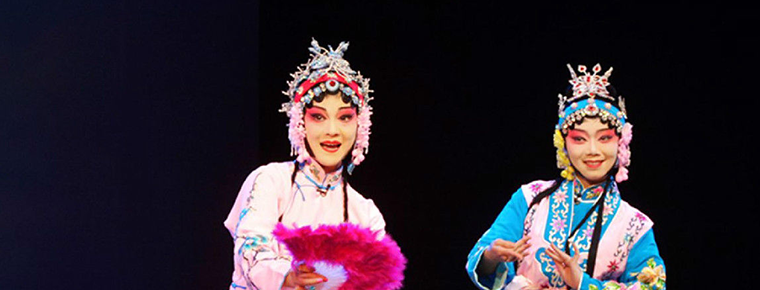
-
About Us
If you are interested in Chinese culture, Beautiful Scenery and Delicious Food, Welcome to China..
Views: 359 Time 2018-09-28 -
Guangzhou soup
Guangzhou old fire soup is a traditional and famous dish, which belongs to Guangdong cuisine..
Views: 238 Time 2018-11-14 -
Tianjin Ancient Culture Street Tourist Area Jinmen Hometown
Tianjin Ancient Culture Street is located outside the east gate of the northeast corner of Nankai District of Tianjin City and on the West Bank of Haihe River.
Views: 223 Time 2018-11-24 -
Mount QianQianshan Mountain
Mount Qian,Qianshan Mountain is located 17 kilometers southeast of Anshan City, Liaoning Province, with a total area of 44 square kilometers..
Views: 162 Time 2018-12-04 -
Heilongjiang Science and Technology Museum
Heilongjiang Science and Technology Museum is located in Sun Island Science and Technology Park of Harbin City, which is a ship-shaped building sailing.
Views: 277 Time 2018-12-08 -
Avanti
Avanti, also translated by the Albanian side, (Uygur "Mr." means, Arabic: Juha or Nazar Ding), is a person active in Islamic nationalities from Morocco in the west to Xinjiang in China..
Views: 140 Time 2019-03-28 -
Wenzhou Drum Ci
Wenzhou Drum Ci, also known as "Quci" or "Blind Ci", commonly known as "Singing Ci", is the largest type of opera in southern Zhejiang Province, and also one of the main .
Views: 186 Time 2019-06-28 -
Guangxi drama
One of the local operas of the Zhuang nationality in Guangxi. Yongju Opera belongs to the Pihuang Vocal Tune System, which originated in Hunan. It was formerly called Guangju Opera, Old Opera, Local O.
Views: 166 Time 2019-07-14 -
Du Fu
Du Fu (712 - 770 years), Zi Zi Mei, from the Shao Ling old man, Tang dynasty Great realistic poets, and Li Bai It is called "Li Bai". Originally from Xiangyang, Hubei, Henan county. With two.
Views: 412 Time 2019-09-07 -
Luzhou natural resources
The total amount of water resources in Luzhou is 6.657 billion cubic meters per year. The groundwater reserves are rich, reaching 1.065 billion cubic meters per year, among which Xuyong and Gulin counties in the south are the richest. The structural fissure water in the south.
Views: 344 Time 2020-12-14 -
Famous people in Mianyang
Wenqi, Emperor chengdi of Han Dynasty, Guangwu people, Ziqi, Zhenyuan General of the Eastern Han Dynasty..
Views: 328 Time 2020-12-14

